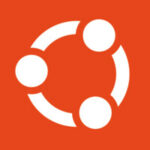The term Big Data is an all-encompassing phrase that has various subdivisions addressing different needs of the customers. The most common description of Big Data talks about the four V’s: Volume, Velocity, Variety and Veracity.
Volume represents terabytes to exabytes of data, but this is data at rest. Velocity talks about streaming data requiring milliseconds to seconds of response time and is about data in motion. Variety is about data in many forms: structured, unstructured, text, spatial, and multimedia. Finally, veracity means data in doubt arising out of inconsistencies, incompleteness and ambiguities.
Hadoop is the first commercial version of Internet-scale supercomputing, akin to what HPC (high-performance computing) has done for the scientific community. It performs, and is affordable, at scale. No wonder it originated with companies operating at Internet scale, such as Yahoo in the 1990s, and then at Google, Facebook and Twitter.
In the scientific community, HPC was used for meteorology (weather simulation) and for solving engineering equations. Hadoop is used more for discovery and pattern matching. The underlying technology is similar: clustering, parallel processing and distributed file systems. Hadoop addresses the “volume” aspect of Big Data, mostly for offline analytics.
NoSQL products such as MongoDB address the “variety” aspect of Big Data: how to represent different data types efficiently with humongous read/write scalability and high availability for transactional systems operating in real time. The existing RDBMS solutions are inadequate to address this need with their schema rigidity and lack of scale-out solutions at low cost. Therefore, Hadoop and NoSQL are complementary in nature and do not compete at all.
Whether data is in NoSQL or RDBMS databases, Hadoop clusters are required for batch analytics (using its distributed file system and Map/Reduce computing algorithm). Several Hadoop solutions such as Cloudera’s Impala or Hortonworks’ Stinger, are introducing high-performance SQL interfaces for easy query processing.
Hadoop’s low cost and high efficiency has made it very popular. As an example, Sears’ process for analyzing marketing campaigns for loyalty club members used to take six weeks on mainframe, Teradata and SAS servers. The new process running on Hadoop can be completed weekly.
The Hadoop systems, at 200TB, cost about one-third of 200TB relational platforms. Mainframe costs have been reduced by more than US$500,000 per year while delivering 50x to 100x better performance on batch jobs. The volume of data on Hadoop is currently at 2PB. Sears uses Datameer, a spreadsheet-style tool that supports data exploration and visualization directly on Hadoop. It claims to develop interactive reports in three days, a process that use to take six to 12 weeks.
NoSQL products such as MongoDB are getting hugely popular in the developer community. They seamlessly blend with modern programming languages like JavaScript, Ruby and Python, thus imparting high coding velocity. This simplicity has made them very popular in a short amount of time.
With RDBMS, there was impedance mismatch when an object-oriented programming model had to map to the row-column structure of the database (like translating Swahili to French). The rich data model can handle varieties of data with full indexing and ad hoc query capabilities.
The other reason is its ability to scale horizontally over commodity servers and provide massively parallel processing. This aspect is similar to Hadoop’s distributed architecture. However, NoSQL has to deal with the operational aspects of production databases running on premise or in the cloud, whereas Hadoop basically operates in offline batch mode for analysis.
NoSQL is used by large enterprises to build “systems of engagement.” Enterprise IT has spent decades building “systems of record” to run their business—essentially technology that contains a database. Now, CIOs are under pressure to build systems of engagement in which the focus is on using modern technology and the Internet to better communicate internally and externally.
One such system of engagement was recently built at MetLife, the 145-year old insurance company. The goal was to provide a 360-degree view of the customer (switching from a policy-centric view to a customer-centric view), whose information was scattered across 20 legacy systems of record. This way, any agent at MetLife can get a complete picture of a customer’s activities using a mobile device, anytime, from anywhere.
The entire system was developed and deployed in three months using the MongoDB platform. The reasons for the rapid deployment were attributed to MongoDB’s flexible data model, linear scaling via its sharding architecture, high coding velocity, and iterative development using JSON.
NoSQL and Hadoop have a peaceful coexistence. MongoDB, for example, offers a Hadoop connection pipe for easy movement of data between the two stores. Similarly, Oracle offers a connection for data movement between Hadoop and the Oracle DB. Future additions to Hadoop such as YARN and Tez are aimed at extending it for real-time data loading and queries, but not to solve the needs of mission-critical production systems (the domain of NoSQL).
Jnan Dash is a technology visionary and executive consultant in Silicon Valley. He spent 10 years at Oracle and was the Group Vice President of Systems Architecture and Technology. Prior to joining Oracle, he spent 16 years at IBM in various positions, including in development of the DB2 family of products and leading IBM’s database architecture and technology efforts.





